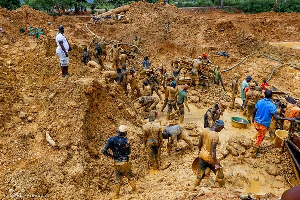In recent conversations with a close friend, he shared a rather peculiar dilemma about his marriage. Barely a few months into their union, he was already grappling with a deep frustration—the seemingly mismatched levels of intimacy between him and his wife. When they first got married, his wife had confided in him that she didn’t have much of an appetite for intimacy.
He respected her feelings, considering she had lived by her Christian principles before marriage, which included abstaining from any form of intimacy until they tied the knot. This, he believed, explained her initial reluctance and he was prepared to adjust. In those first few weeks of marriage, they handled each other with care and patience, building on love rather than intimacy alone.
However, the dynamic began to change when his desires, long suppressed,
became difficult to ignore. He began to show a more intense longing for closeness, leaving his wife overwhelmed. She, not wanting to disappoint, decided to take matters into her own hands, unbeknownst to him. She resorted to using a libido enhancer, which initially seemed like a solution to their mismatched desires. But in a twist of irony, her newfound energy left my friend
exhausted, unable to keep up. Now, they find themselves at a crossroads, and he's contemplating whether their marriage can survive this mismatch. But as in all matters, finding the solution to their troubles depends on understanding the real problem at hand. Is it her previous disinterest in intimacy? His overwhelming desire? Or is it the enhancer that has thrown things off balance? Much like this personal conundrum, the issue of illegal small-scale mining in
Ghana, popularly known as "galamsey," presents us with a similar challenge—have we truly identified the root cause of the problem, or are we merely treating its symptoms?
Much like my friend’s marital dilemma, the issue of illegal small-scale mining, known locally as "galamsey," is far more complex than it appears at first glance. Galamsey, derived from the phrase "gather them and sell," refers to unregulated, small-scale gold mining activities that have been ingrained in Ghana’s history for centuries. In fact, before the advent of colonial rule, small-scale mining was an essential economic activity for many indigenous communities, providing livelihoods and fostering local economies.
However, in recent years, the narrative has shifted dramatically. With the introduction of high-tech mining equipment and harmful chemicals such
as mercury and cyanide, galamsey has evolved from a traditional craft into an environmental and public health catastrophe. The scale of destruction is difficult to ignore: rivers like the Pra, Ankobra, and Offin have turned from sources of life to toxic cesspools. Lands once fertile for agriculture have been ravaged, leaving them barren and unable to support food production.
This is not just an environmental concern; it is a direct threat to the livelihoods of many, as the very resources they depend on are slowly being poisoned and destroyed. Yet, despite numerous government interventions, galamsey continues to thrive. The question then is: Are we addressing the right problem? Have we delved deeply enough to understand why this destructive practice persists, or are we merely reacting to its most visible effects—the polluted
rivers and the scarred landscapes—without tackling the root causes?
Just as my friend’s marriage cannot be saved without first identifying what truly ails it, the fight against galamsey will remain futile if we don’t first diagnose the real underlying issues. At the heart of the galamsey issue lies a deeper, socio-economic dilemma. The livelihoods of countless Ghanaians are intricately tied to these illegal mining activities, and for many, it is not a
matter of choice but survival. During my own travels through mining regions, including the Western region, I encountered miners who spoke candidly about their reliance on galamsey to make ends meet.
Shockingly, they revealed among them were university graduates, and students, all driven by economic necessity rather than ignorance of the consequences. Despite being acutely aware of the environmental degradation and the health hazards caused by mercury and other chemicals, they felt trapped in a cycle that offered no alternative. For many of these miners, abandoning galamsey would mean forfeiting their only means of income. Their plight is a reflection of a larger systemic issue—a lack of viable employment opportunities, especially in rural and mining-dependent communities.
This highlights a fundamental contradiction in our approach to addressing the galamsey menace. Just as in my friend’s marriage, where his wife’s drastic actions stemmed from a perceived lack of options, those engaged in galamsey often see no other way to support themselves and their families. If we are to find a real solution, we must look beyond the environmental devastation and consider the socio-economic roots of the problem. Galamsey is not just an environmental issue; it is a symptom of a deeper crisis of poverty, unemployment, and economic marginalization.
While the environmental devastation caused by galamsey is undeniable, focusing solely on the environmental impact risks obscuring the human side of the problem. The miners, many of whom are marginalized, are caught between two difficult choices: either continue engaging in this dangerous and illegal activity or face crippling poverty. In many galamsey communities, there is a palpable sense of disillusionment. Government crackdowns on illegal mining, while well-intentioned, often leave these miners without alternatives. The much-publicized military operations and bans on galamsey do little to address the underlying poverty and unemployment that drive the practice.
What we see, therefore, is a cycle of destruction, where every attempt to
curb galamsey only pushes the activity deeper underground, making it harder to regulate and more damaging in the long run. Without addressing the socio-economic inequalities that fuel the practice, we are merely trimming the leaves of a problem whose roots run deep. This brings us to an important realization: just as my friend’s marital issues require open communication and understanding of deeper emotional needs, the galamsey menace requires a comprehensive
approach that considers both the human and environmental dimensions.
Simply banning the practice without offering alternative livelihoods or addressing the economic desperation of the miners is unlikely to succeed. It is only by understanding the full scope of the problem—both its "fruits" (the environmental damage and health risks) and its "roots" (the lack of economic
alternatives)—that we can begin to craft meaningful and lasting solutions.
One crucial aspect of the galamsey issue that we must confront is the role of governance and regulation. Over the years, successive governments have made various attempts to control illegal mining, with little lasting success. The creation of task forces, the imposition of bans, and the involvement of the military have been well-publicized moves, yet the illegal mining industry
continues to thrive.
This begs the question: why have these efforts failed to yield significant
results? Could it be that we are treating the symptoms rather than the disease? Corruption within regulatory bodies and local authorities is a key factor that cannot be overlooked. Reports of law enforcement officials turning a blind eye to illegal mining activities or, worse, actively colluding with miners for personal gain, are not uncommon. These corrupt practices undermine the very efforts intended to eradicate galamsey. In a sense, this mirrors the communication gap in my friend’s marriage—just as the wife’s non-disclosure of her use of enhancers exacerbated the problem, the lack of transparency and accountability in regulating galamsey creates a fertile ground for the menace to persist.
Until we address these governance issues and strengthen the capacity of institutions tasked with regulating mining, our efforts will remain superficial. The challenge is not just about enforcing laws; it is about ensuring that those responsible for enforcement are beyond reproach and that there are no loopholes for exploitation. Without this, any solution we propose will be incomplete, and the cycle of environmental degradation and human exploitation will continue.
The challenge of tackling galamsey is further complicated by the involvement of powerful, often invisible, forces behind the scenes. In many instances, illegal mining is not solely the activity of impoverished individuals seeking to make a living. Rather, it is part of a larger, more organized network of well-connected individuals, some of whom may hold significant influence in political and business circles. These "kingpins" provide the financial backing and resources, such as heavy machinery and chemicals, to facilitate large-scale illegal mining operations.
The miners on the ground are often just pawns in a much bigger game. This raises a critical point: addressing galamsey requires not only targeting the miners but also dismantling the powerful networks that support and benefit from these activities. The failure to go after these influential figures is akin to treating a marital problem by only focusing on surface issues, rather than
addressing the deeper, more complex dynamics at play. If we focus all our energy on the miners, we risk missing the real drivers of the problem—the financiers and facilitators who profit from the destruction of our environment. Until we bring these individuals to book and disrupt their operations, the galamsey menace will continue to thrive.
It is essential, therefore, that any strategy to combat galamsey includes measures to identify and hold accountable those at the top of the chain, not just the laborers in the pits. This requires political will, strong leadership,
and a commitment to pursuing justice, no matter how high the stakes. Another dimension that must be explored in the fight against galamsey is the role of community involvement and education. Many of the regions most affected by illegal mining are rural, with limited access to formal education and employment opportunities. As a result, for many locals, galamsey is not just a means of survival; it is often viewed as one of the few viable economic activities available. Without meaningful alternatives, people in these communities feel trapped in a cycle of poverty.
Any successful strategy to combat galamsey must therefore include programs that empower these communities with knowledge and skills that offer sustainable
livelihoods. Education on the long-term environmental and health impacts of illegal mining is critical, as is providing training in alternative industries, such as sustainable agriculture, eco-tourism, or renewable energy projects. Much like in my friend's marriage, where communication and mutual understanding were necessary to resolve underlying issues, the engagement of local communities is key to finding lasting solutions to the galamsey crisis.
Ignoring their needs and perspectives will only fuel resentment and resistance to change. Moreover, empowering communities to take ownership of their natural resources and protect their environment can foster a sense of responsibility and pride, making them active participants in safeguarding the future. In this regard, government and non-governmental organizations must work together to
create programs that address the root causes of the problem, offering economic incentives and support to move away from illegal mining and toward more sustainable, community-driven solutions.
A pivotal part of this conversation is the legal and policy framework surrounding mining in Ghana. While there are laws governing small-scale mining, the enforcement of these regulations has been inconsistent and, in many cases, inadequate. The Minerals and Mining Act, 2006, (Act 703) for instance, outlines the processes for acquiring licenses for small-scale mining, but illegal operators often bypass these procedures, either due to bureaucratic delays or
the high costs involved. The result is a thriving black market for mining activities, where regulations are flouted, and environmental standards are ignored. This failure to implement and enforce existing laws reflects a deeper problem within the governance of the mining sector. Just as my friend's marital issues required setting clear boundaries and expectations, so too does
the galamsey issue demand a more robust legal framework that is consistently enforced.
Moreover, the penalties for engaging in illegal mining must be substantial enough to serve as a deterrent, but this alone is not enough. The government must also make the legal route more accessible and less burdensome for miners who wish to operate legitimately. Simplifying the licensing process, reducing costs, and ensuring that miners receive the necessary technical training can incentivize legal, environmentally friendly mining practices. The lack of effective legal enforcement only perpetuates a culture of impunity, where illegal operators feel emboldened to continue their activities without fear of significant repercussions.
Strengthening the legal framework, therefore, is crucial, but it must be accompanied by practical steps that support miners in transitioning to legal operations. In light of the ongoing devastation caused by galamsey, one proposed solution that continues to gain traction is an outright ban on small-scale mining. While this approach might seem like an immediate fix, it raises important questions about its long-term viability. Banning all forms of
mining, including legal small-scale operations, could exacerbate the economic hardships faced by individuals who rely on mining for their livelihood. As we’ve seen in the past, outright bans often drive illegal activities further underground, making them even harder to regulate and control.
It’s a classic case of attempting to solve one problem only to create another, much like how my friend’s wife’s use of enhancers initially addressed one issue but led to unforeseen complications in their marriage. A blanket ban could also lead to social unrest in mining communities, where people feel that their economic survival is being threatened without viable alternatives. Instead of focusing solely on prohibition, we need to consider more sustainable options that balance environmental protection with economic opportunity. This might include introducing stringent regulations for small-scale mining while simultaneously offering financial incentives and technical support to miners who adopt eco-friendly practices.
By doing so, we can create a win-win situation where mining continues in a controlled, responsible manner, and our natural resources are protected. Rather than taking an all-or-nothing approach, a nuanced, balanced strategy that addresses both environmental concerns and economic realities is essential for creating lasting change.
In a nutshell, the galamsey menace in Ghana is a complex issue that requires a holistic approach to resolve effectively. Just as in personal relationships, where understanding the deeper causes of conflict can lead to meaningful solutions, addressing galamsey demands a thorough analysis of its underlying causes—economic, social, and governance-related. We must recognize that banning illegal mining without providing alternatives or addressing systemic issues will likely lead to further complications rather than solutions. Similarly, our response to galamsey must involve a combination of sustainable practices, community engagement, legal reform, and economic support.
By focusing on both the symptoms and the root causes of the problem, we can develop strategies that not only address the immediate environmental and
health impacts but also provide long-term solutions for the people involved. It is imperative that all stakeholders—government agencies, local communities, environmental organizations, and the private sector—work collaboratively to create a framework that ensures both environmental protection and economic stability.
The path forward requires courage, innovation, and a commitment to justice. As we strive to protect our natural resources and improve the lives of
those impacted by galamsey, let us remember that true progress comes from understanding and addressing the full scope of the problem. Only then can we build a sustainable future for Ghana, where both our people and our environment can thrive in harmony.
Opinions of Thursday, 12 September 2024
Columnist: Richmond Anane-Simon















